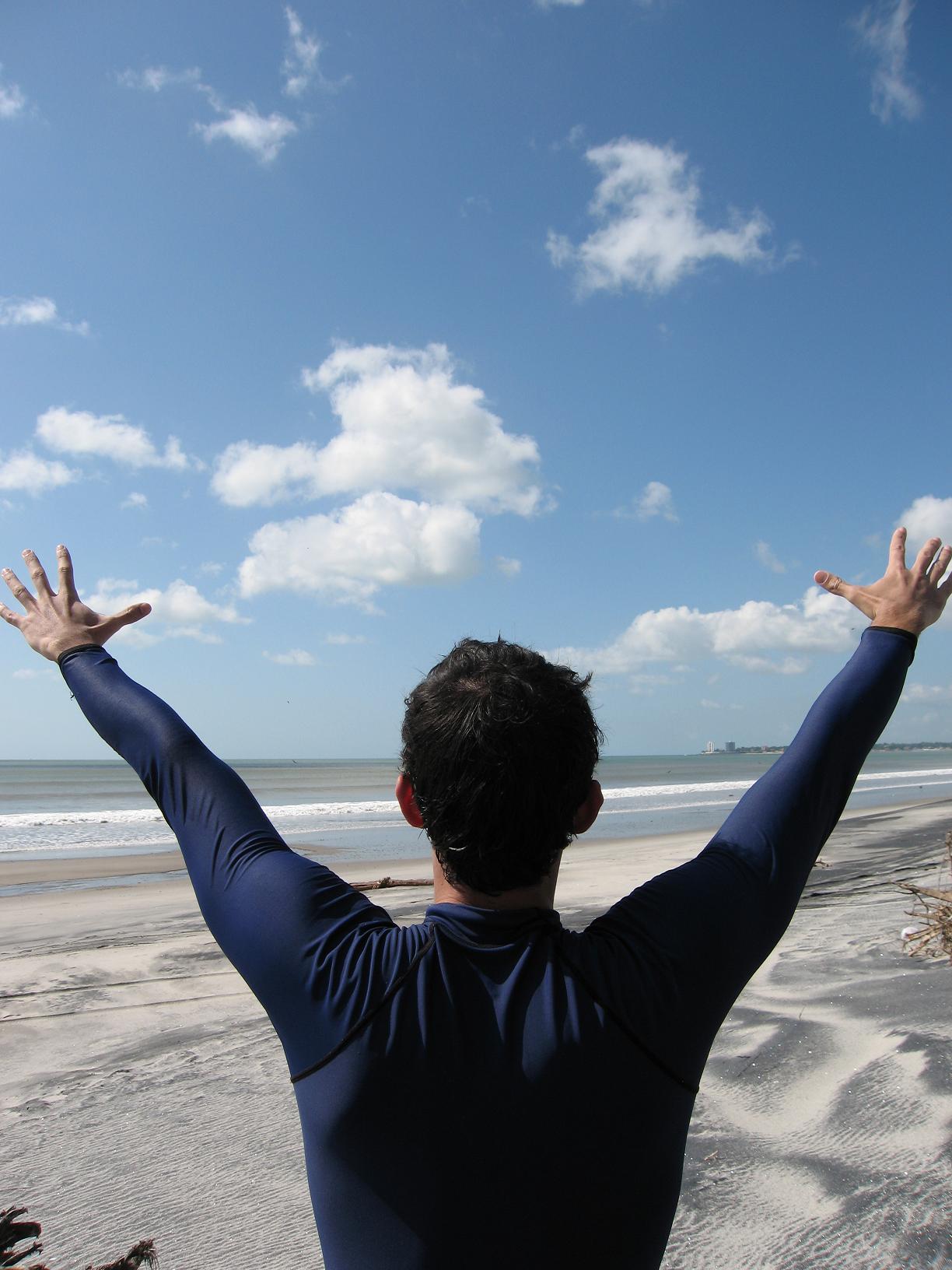The Take Off and Pop Up
It takes time to understand the timing of waves so be patient, observe, and feel the rhythms. Position yourself towards the beach in preparation for a take off, making sure that no one is in your line of riding. Get used to looking over your shoulder for a wave and paddling in anticipation as the wave approaches a point about four to five metres behind you. As you develop you will be able to adapt this start and learn to accelerate quicker.
Once the wave lifts up the board’s tail you must really drive deep and get a final boost with three ‘power’ strokes and then bring your hands in to hold the rails in a position just below your shoulders, in line with your chest. Enjoy the ride!
TIPS; Control the direction and speed with adjustments to your
weight distribution, and by moving your centre of mass in the direction you want to go. If at any point you crash protect your head with your arms, before popping back up, keep your bonce protected until you can see where your board is.
Do this a few times to get comfortable with things. Now you are ready to attempt jumping up to your feet or ‘popping up’. Paddle to catch a wave as before, except this time, as the board starts to accelerate down the wave, after your power strokes, the moment your hands grab the rails spring out of your toes thrusting your bum skywards aiming to plant your front foot in a central position on the board, half way up the deck and over the stringer at a slight angle, toes pointing slightly forward. The back foot does not travel as far, resting near the fins on the rear portion of the board, shoulder width behind the front, at right angles to the stringer or centre line. As soon as your feet hit the deck release your hands from the rails and raise them to chest level. Keep the tip of the board up, don’t sink that tail too much and ride ‘em cowboy! Yeeeehaaaaaaaa.
It will be fantastic getting up for the first time, even if for a few seconds it will be like walking on the face of the moon! Try to stand for as long as possible, and just before the board hits the sand or you finish a ride, slow it down and weight the tail into a stall then dismount. Bring your hands to the rails then slide off to one side of the board, keeping hold of it. Don’t just jump off, as you can hurt yourself and the board may hit others.
TIPS! Stance; When you get up to your feet try to drop your centre of mass towards the board. This will help to stabilise you, making for an easier platform from which to make balance adjustments. People tend to stand straight legged to start with because they feel unbalanced, this will make it harder and often throw the rider straight off. Keep a straight back, looking forward with the head, legs flexed, bum tucked in. Raise your lead arm to chest level and use it as an aim or focal point for your ride trajectory. The back arm naturally can stay loose trailing behind the body making fine balance adjustments, this will encourage your shoulders to generally follow the tip to tail line of the surfboard if travelling in a straight line. All these things should keep your centre properly aligned over the middle of the board, where you can start to command it by small adjustments in weight distribution.
Once comfortable and in control, make directional changes by tipping in the direction of choice, turning the lead arm into the new trajectory line. As this is done pressure up the back foot a little to release the nose of the board, allowing it to pivot about the fins with your body’s rotation into the new line of travel. Then apply some more weight to the front of the board to accelerate.

Comments
24 responses to “The Take Off and Pop Up”